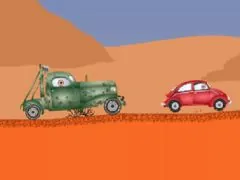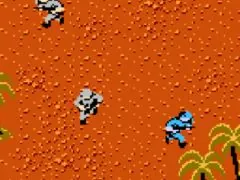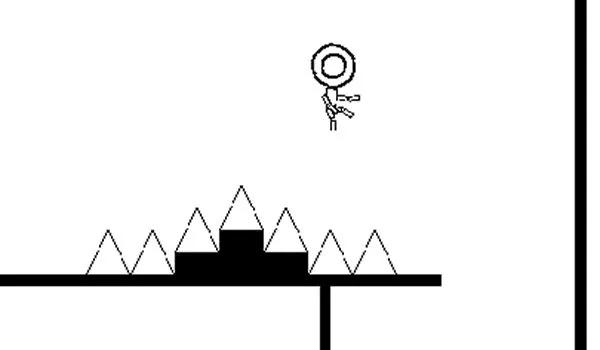AGE OF WAR
SIMILAR GAMES
Description
Age of War - Unblocked Games MTWTF
About Age of War - Unblocked Games MTWTF
We delve into the strategic depths of **Age of War**, a compelling defense and offense game that invites players on an epic journey through the annals of human civilization. This engaging experience, readily accessible on platforms like Unblocked Games MTWTF, meticulously recreates the constant struggle for survival and dominance across vast historical epochs. Players assume the role of a burgeoning civilization, tasked with defending their stronghold against an ever-advancing adversary. The core gameplay revolves around resource management, unit training, and technological progression, all critical elements for success in this dynamic battlefield.
The Genesis of Conflict: A Strategic Overview
The narrative of **Age of War** is intrinsically tied to the evolution of warfare and societal advancement. From its nascent beginnings in the **Stone Age**, players are thrust into a world where primitive tools and brute force reign supreme. The objective is clear: build a robust defense and cultivate a formidable offensive force to repel incoming waves of enemies. This requires a keen understanding of economic management, as gathered resources are the lifeblood of any military endeavor. Players must strategically allocate their earnings towards training a diverse array of units, each possessing unique strengths and weaknesses, and constructing vital defensive structures that act as bulwarks against the onslaught.
From Prehistory to the Future: Unfolding Eras of Warfare
What sets **Age of War** apart is its ambitious scope, spanning multiple historical periods. As players successfully defend their base and accumulate sufficient experience, they unlock new technological advancements and, consequently, transition to subsequent eras. This progression is not merely cosmetic; each era introduces entirely new units, defensive capabilities, and strategic considerations. The **Stone Age** might see players commanding rudimentary cavemen and archers, while the **Bronze Age** could bring forth more organized infantry and fortified structures. Further advancements lead to eras filled with knights, musketeers, and eventually, the futuristic marvels of a technologically advanced future, complete with soldiers wielding lasers and advanced combat vehicles. This continuous evolution ensures that the gameplay remains fresh and challenging, demanding constant adaptation from the player.
The Art of War: Balancing Offense and Defense
At its heart, **Age of War** is a testament to the delicate balance between offensive might and defensive resilience. The battlefield is presented as a single, linear lane, simplifying the tactical landscape but intensifying the focus on unit deployment and timing. Players must meticulously observe the enemy's unit composition and deployment patterns to effectively counter their advances. Sending wave after wave of attackers without a strong defensive foundation is a recipe for disaster, just as building an impenetrable fortress without the means to push back the enemy will ultimately lead to being overwhelmed. Strategic deployment involves understanding unit types – which are strong against certain enemy units, which are fast, and which have area-of-effect attacks. This constant ebb and flow of strategic decision-making forms the captivating core of the **Age of War** experience.
Mastering the Battlefield: Key Gameplay Mechanics
Success in **Age of War** hinges on a deep understanding and proficient execution of its core mechanics. These elements are not merely features; they are the building blocks upon which victory is constructed. We will explore each crucial aspect in detail, providing insights into how players can optimize their strategies and overcome the relentless challenges presented by the game.
Resource Management: The Foundation of Civilization
Every civilization, in **Age of War**, begins with a limited pool of resources. These are typically generated over time and can be augmented through specific unit upgrades or defensive structures that provide an economic advantage. The ability to effectively manage these resources is paramount. Players must decide whether to invest in immediate offensive units to push back an enemy threat, build up defenses to weather a sustained assault, or save for more advanced, costlier units and technologies that offer greater long-term benefits. A miscalculation in resource allocation can quickly lead to a depleted army or an undefended base, paving the way for defeat. We emphasize that understanding the cost-benefit analysis of each unit and upgrade is critical. For instance, investing in a powerful but expensive unit might be wise if it can clear out multiple weaker enemy units efficiently, thus saving resources in the long run.
Unit Training and Deployment: The Art of the Offensive Push
The array of units available in **Age of War** expands significantly as players progress through the different ages. Each unit possesses distinct attributes, including attack power, defense, speed, and special abilities. Effective training involves understanding which units are most effective against the current enemy composition and which complement each other in an offensive push. For example, deploying fast, low-cost units like primitive warriors at the beginning of an engagement can help scout enemy defenses and absorb initial damage, allowing more powerful, slower units to advance safely. Conversely, deploying heavily armored units first might be a better strategy to break through enemy lines. The placement of these units on the single lane is also crucial; units that are vulnerable to ranged attacks should be placed behind sturdier units.
Defensive Structures: Fortifying Your Empire
While offense is crucial, a strong defense is equally vital for survival in **Age of War**. Players can construct various defensive structures, such as walls, turrets, and bunkers, each offering different levels of protection and offensive capabilities. Walls act as physical barriers, slowing down enemy advances and absorbing damage. Turrets, on the other hand, provide offensive support, automatically attacking approaching enemies. The strategic placement of these structures is key. For instance, placing turrets behind walls can create a layered defense, where enemies must first breach the outer defenses before being exposed to direct turret fire. Upgrading these structures also plays a significant role, increasing their durability or firepower.
Technological Advancement: The Engine of Progress
The progression through the ages in **Age of War** is driven by technological advancement. Investing in research and development allows players to unlock new units, upgrade existing ones, and improve their overall efficiency. This can include increasing unit health, damage output, movement speed, or even unlocking entirely new combat mechanics. Choosing which technologies to prioritize is a strategic decision that can significantly impact the game's outcome. For instance, unlocking an early upgrade that increases resource generation can provide a substantial economic advantage throughout the game. Conversely, focusing on unlocking advanced combat units sooner might be necessary if the enemy is proving particularly aggressive.
The Strategic Depth of Each Age
The progression through **Age of War** is not a linear climb; it's a dynamic evolution of conflict. Each distinct historical period presents unique challenges and opportunities, requiring players to adapt their strategies and unit compositions accordingly. We explore the characteristics that define each era, highlighting the strategic considerations that emerge as civilizations advance.
The Primal Struggle: The Stone Age
The **Stone Age** is where the **Age of War** journey begins, a testament to humanity's earliest struggles for survival. Units in this era are rudimentary, primarily composed of cavemen wielding clubs and spears. Defenses are often simple barricades. The focus here is on establishing a basic economy and training a consistent stream of these primitive units to repel early enemy waves. Understanding the cost-effectiveness of early units is vital, as resources are scarce. Players must learn to manage their income and invest wisely in either more warriors or basic defensive emplacements to secure their foundation before contemplating any offensive maneuvers. The enemy in this age often employs similar basic units, making unit-for-unit engagements a common occurrence. Mastering the timing of unit production and deployment is key to surviving these initial onslaughts.
The Rise of Organized Forces: The Bronze Age and Beyond
As players transition into the **Bronze Age**, the landscape of warfare begins to change significantly. Metalworking introduces more organized and potent units, such as swordsmen and shield-bearers, offering superior defense and attack capabilities compared to their Stone Age predecessors. Fortifications become more robust, and the strategic importance of unit formation starts to become more pronounced. This era demands a more nuanced approach to resource allocation, as stronger units come with higher costs. Players must balance the need for quantity with the desire for quality, ensuring they have enough units to maintain pressure while also possessing units capable of breaking through a fortified enemy position. The introduction of early ranged units, such as slingers or rudimentary archers, also adds another layer of tactical complexity.
The Era of Empires: Medieval and Renaissance Warfare
Further progression into the **Medieval** and **Renaissance** eras introduces a wider variety of specialized units. Knights, archers, pikemen, and eventually early gunpowder units like musketeers appear on the battlefield. Each unit type has specific strengths and weaknesses that players must exploit. For instance, pikemen are effective against charging cavalry, while archers can provide crucial ranged support from a safe distance. Fortifications become more elaborate, with castles and ramparts offering significant defensive advantages. Strategic deployment becomes a true art form, requiring players to orchestrate combined arms attacks, where different unit types work in synergy to overcome enemy defenses. The economic aspect also intensifies, as these powerful units and advanced fortifications require substantial resource investment.
The Apex of Conflict: Futuristic Warfare
The ultimate stage of **Age of War** plunges players into the realm of futuristic combat. This era showcases the pinnacle of technological achievement, with units such as laser-wielding soldiers, advanced tanks, and perhaps even flying drones. Defenses evolve into high-tech energy shields and automated turrets. The speed and intensity of combat in this era are significantly higher. Players must leverage cutting-edge technologies and highly specialized units to outmaneuver and overpower their opponents. Resource management remains critical, but the emphasis shifts towards rapid deployment of powerful, often area-effect, units and the strategic use of devastating superweapons or abilities that can turn the tide of battle. The visual spectacle of futuristic warfare, combined with the complex strategic decisions required, offers a thrilling climax to the **Age of War** experience.
Strategies for Dominance in Age of War
Achieving consistent success in **Age of War** requires more than just reactive gameplay; it demands proactive strategic planning and an understanding of the underlying principles that govern effective warfare. We have identified several key strategic approaches that can significantly enhance a player's ability to dominate the battlefield and secure victory across all eras.
Understanding Unit Synergies
One of the most overlooked aspects of **Age of War** is the power of unit synergy. Simply training the strongest available units is not always the most effective strategy. Instead, players should focus on creating balanced armies where different unit types complement each other. For example, a frontline of heavily armored melee units can absorb damage and protect fragile ranged units positioned behind them. Similarly, fast, cheap units can be used as a distraction or to flank enemy positions, drawing their attention away from your main assault. Experimenting with different unit combinations and observing how they interact with enemy forces is crucial for developing winning strategies. This understanding of rock paper scissors dynamics within the game is fundamental.
The Importance of Economic Warfare
While direct combat is the ultimate decider, economic superiority often dictates the outcome of a protracted conflict in **Age of War**. Players who can consistently out-produce their opponents in terms of resources will inevitably field larger and more advanced armies. This means strategically investing in upgrades that increase resource generation rates or unlock more efficient ways to gather them. Sometimes, a small investment in an economic upgrade early in the game can yield significant dividends later on, allowing for faster unit production and more frequent offensive pushes. It is also beneficial to consider how certain units or defenses might indirectly impact the enemy's economy, perhaps by forcing them to spend more on defense rather than offense.
Adaptive Defensive Formations
A static defense is a vulnerable defense. The enemy in **Age of War** will adapt their strategies, and so too must your defenses. Players should be prepared to shift their defensive formations and structures based on the types of units the enemy is deploying. If the enemy is relying heavily on fast, melee units, investing in units with high defensive capabilities and structures that can slow them down, such as barricades or spiked traps, might be necessary. If the enemy employs many ranged units, creating cover for your own troops or deploying units that can quickly close the distance and engage them in melee becomes paramount. The ability to quickly assess threats and adjust defensive postures is a hallmark of a seasoned player.
Controlled Aggression and Timing
While **Age of War** is a game of constant conflict, indiscriminate aggression can be detrimental. Players must learn to balance offensive pushes with periods of consolidation and defense. Launching an attack at the right moment, when your army is sufficiently strong and the enemy's defenses are weakest, can lead to significant breakthroughs. Conversely, attacking when your forces are depleted or the enemy has a significant advantage can result in a costly defeat. Learning to read the flow of the game, anticipate enemy moves, and strike decisively when the opportunity arises is a critical skill. This often involves building up a strong force, waiting for the opportune moment, and then unleashing a concentrated assault to break through enemy lines.
Leveraging Special Abilities and Technologies
As players progress through the ages, they will unlock special unit abilities and potent technologies. These can include powerful area-of-effect attacks, temporary buffs for your units, or devastating special weapons. Mastering the use of these abilities is crucial for turning the tide of difficult battles. Understanding when to deploy a powerful superweapon or activate a crucial unit ability can make the difference between victory and defeat. These abilities are often on cooldown timers, so using them at the most opportune moments maximizes their impact. Integrating these special assets into your overall strategy is key to achieving dominance in the later stages of **Age of War**.
The Enduring Appeal of Age of War
The captivating nature of **Age of War** lies in its ingenious blend of accessibility and strategic depth. It offers an experience that is easy to pick up and understand, yet possesses enough complexity to remain engaging and challenging for countless hours. The progression through historical ages provides a constant sense of advancement and discovery, ensuring that players are always working towards new goals and unlocking new possibilities. Whether you are a seasoned strategist or a newcomer to the genre, the dynamic battlefield of **Age of War** provides an exciting and rewarding experience, readily available on platforms like Unblocked Games MTWTF.
Age of War is a captivating blend of strategy and defense where players lead their civilizations through multiple eras of human history, battling against a relentless opponent determined to topple their empire. Starting in the Stone Age, players must manage their resources to train units, build defenses, and advance their civilization’s technology to progress through successive ages. Each era brings unique units and technologies, ranging from prehistoric cavemen wielding clubs to futuristic warriors armed with advanced weaponry. The game challenges players to balance offense and defense, strategically deploying units along a single battlefield lane to counter enemy forces and protect their own base.
Strategic Deployment and Technological Advancement
As players progress in Age of War, they must decide when and how to spend their resources on upgrading their capabilities and moving to the next age. Advancing through ages unlocks more powerful units and defense mechanisms, but also costs resources that could otherwise be used to deploy more units for immediate battlefield impact. Strategic timing is crucial, as players must fend off increasingly powerful waves of enemy attacks while trying to push back and destroy the enemy base. The game also features special attacks and abilities, which can be used to turn the tide of battle in critical moments, adding an additional layer of depth and strategy to the gameplay.
Age of War combines simple yet deep strategic elements with a seamless progression through historical epochs, making it a game that is easy to pick up but challenging to master. Players must constantly adapt their strategies to the evolving capabilities of their own and their opponent’s forces, making each playthrough a dynamic and engaging experience. Whether deploying dinosaurs or robots, the goal remains the same: evolve, outsmart, and conquer.















































